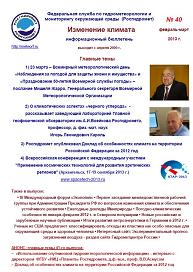| The Kyoto Protocol |
 |
 |
 |
|
The Kyoto Protocol - the first international agreement that contains quantified commitments of the member states to limit and reduce greenhouse gas (GHG) emissions. In November 2004 Russia ratified the Kyoto Protocol which is designed for 5 years (from 2008 to 2012). The global role of the Kyoto Protocol: • The pilot phase of global environmental agreements to prevent catastrophic climate change • International support for national efforts to implement substantial steps to reduce GHG, develop renewable energy, implement environmental projects for ecosystem adaptation to changing climate • A catalyst for scientific research on climate change The obligations of the Russian Federation to implement the Kyoto Protocol: • Improving energy efficiency in relevant sectors of national economy • Development of sustainable forms of agriculture • Protection and enhancement of GHG absorbers, promotion of sustainable forest management practices, forestation and reforestation • Conducting research, promotion, development and wider use of new and renewable energy • Limitation and / or reduction of GHG emissions in transport • Limitation and / or reduction of methane emissions • Creating a national system for estimating anthropogenic emissions and GHG absorbers not controlled by the Montreal Protocol • Preparing an annual cadastre of anthropogenic emissions and absorbers • Creation of carbon units registry • Quantitative obligation: not to exceed in 2008-2012 emissions in 1990 Mechanisms of the Kyoto Protocol: The purpose of the Kyoto Protocol mechanisms - to ensure reduction of anthropogenic GHG emissions through the introduction of new energy-saving technologies on the basis of international cooperation.
The protocol provides three main mechanisms of quotas assignment for GHG emissions between countries: 1. Trading 2. Joint implementation (JI). In contrast to the direct sale, the selling country can pass to the buyer country only emission reduction units (ERUs) generated as a result of investments in projects that reduce emissions, made in its territory with the buying party (company or government). The buyer country increases emissions allowed in accordance with the number of ERUs received. 3. The Clean Development Mechanism (CDM). Countries sale quotas are countries that have no emissions limitation commitments.
|





